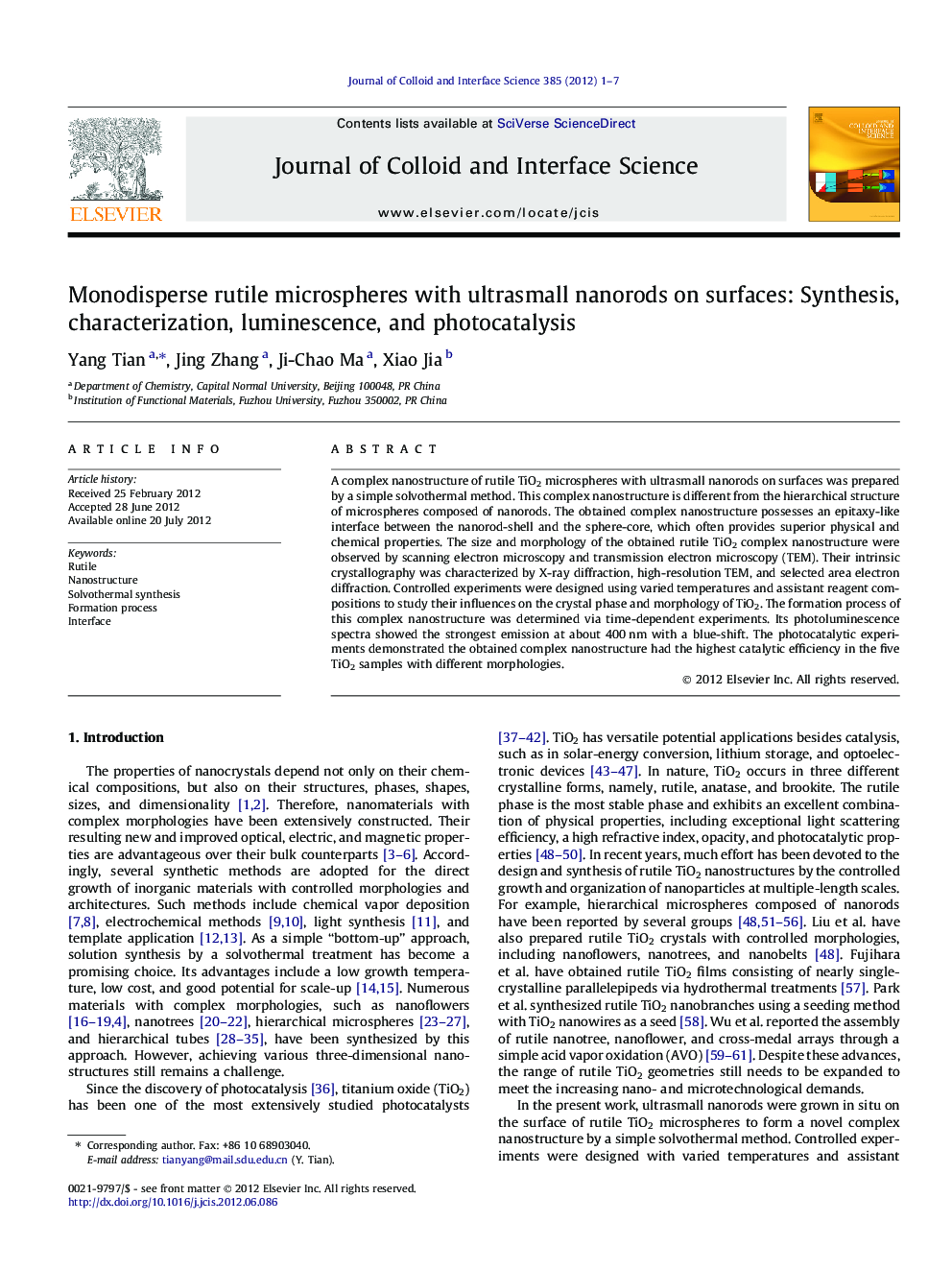| Article ID | Journal | Published Year | Pages | File Type |
|---|---|---|---|---|
| 608001 | Journal of Colloid and Interface Science | 2012 | 7 Pages |
A complex nanostructure of rutile TiO2 microspheres with ultrasmall nanorods on surfaces was prepared by a simple solvothermal method. This complex nanostructure is different from the hierarchical structure of microspheres composed of nanorods. The obtained complex nanostructure possesses an epitaxy-like interface between the nanorod-shell and the sphere-core, which often provides superior physical and chemical properties. The size and morphology of the obtained rutile TiO2 complex nanostructure were observed by scanning electron microscopy and transmission electron microscopy (TEM). Their intrinsic crystallography was characterized by X-ray diffraction, high-resolution TEM, and selected area electron diffraction. Controlled experiments were designed using varied temperatures and assistant reagent compositions to study their influences on the crystal phase and morphology of TiO2. The formation process of this complex nanostructure was determined via time-dependent experiments. Its photoluminescence spectra showed the strongest emission at about 400 nm with a blue-shift. The photocatalytic experiments demonstrated the obtained complex nanostructure had the highest catalytic efficiency in the five TiO2 samples with different morphologies.
Graphical abstractFigure optionsDownload full-size imageDownload high-quality image (106 K)Download as PowerPoint slideHighlights► The TiO2 microspheres with ultrasmall nanorods on surfaces were prepared. ► There is an epitaxy-like interface between the nanorod-shell and the sphere-core. ► Its photoluminescence spectra showed a strong emission with a blue-shift. ► The obtained TiO2 showed superior catalytic efficiency.
